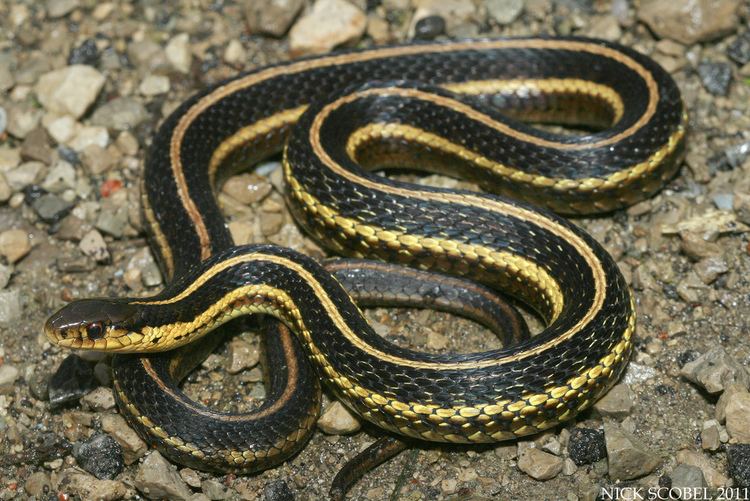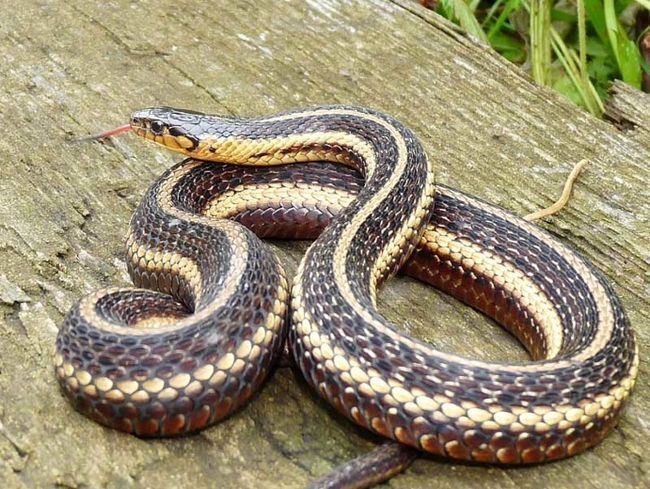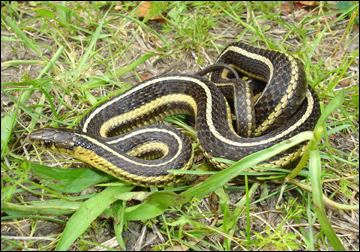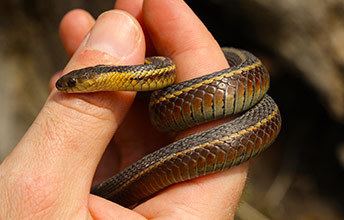Subphylum Vertebrata | ||
 | ||
Similar Garter snake, Snake, Reptile, Plains Garter Snake, Ribbon snake | ||
Butler s garter snake s first try
Butler’s garter snake (Thamnophis butleri) is a species of garter snake in the family Colubridae. It is endemic to North America.
Contents
- Butler s garter snake s first try
- Butler s garter snake feeding
- Etymology
- Geographic range
- Description and identification
- Ecology
- Reproduction
- Conservation
- References

Butler s garter snake feeding
Etymology
The specific name, butleri, is in honor of ornithologist "Mr. A[mos]. W[illiam]. Butler" (1860-1937) of Brookville, Indiana.
Geographic range

It is found in northwestern Ohio, northeastern Indiana, the eastern portion of the Lower Peninsula of Michigan, and the adjacent extreme southern tip of Ontario, Canada. Also, a disjunct population is found in southeastern Wisconsin.
Description and identification

It is a small, slender snake, averaging 38–51 cm (15–20 in) in total length (including tail), with three yellow to orange stripes along the length of its body. The background color can range from olive-brown to black, and it may also be possible to discern two rows of dark spots between the side and back stripes. These features do little to distinguish them from most other garter snakes species, but the placement of the lateral, or side, stripes is unique to this species. In Butler's garter snakes, the lateral stripes are centered on the third scale row up from the ventral scales, and they also overlap the adjacent second and fourth scale rows. This contrasts with the lateral stripe placement of other garter snake species.

For those hoping to avoid getting close enough to inspect the position of the lateral stripe, other features may help in their identification. The head is unusually small for a garter snake, and, when excited, the effort this snake expends to escape seems to go more towards thrashing in place than to getting away.
Ecology

Butler’s garter snakes inhabit moist, grassy, open canopy areas, such as meadows, wet prairies, marshes, savannas and grasslands. Like Kirtland's snake, they may also be found in grassy vacant lots in suburban and residential areas. The species can often be found under rocks, logs, trash, and boards. They subsist on a diet of mainly earthworms, but they may also eat leeches, salamanders, and frogs. The species hibernates communally, often with other garter snake species. Butler's garter snakes are a relatively short-lived species, and they reach sexual maturity in their second spring.
Reproduction

The species is ovoviviparous. Mating takes place in late March and early April. The young are born in June or July, in broods of four to 14. The newborns are 13–18 cm (5.1–7.1 in) long.
